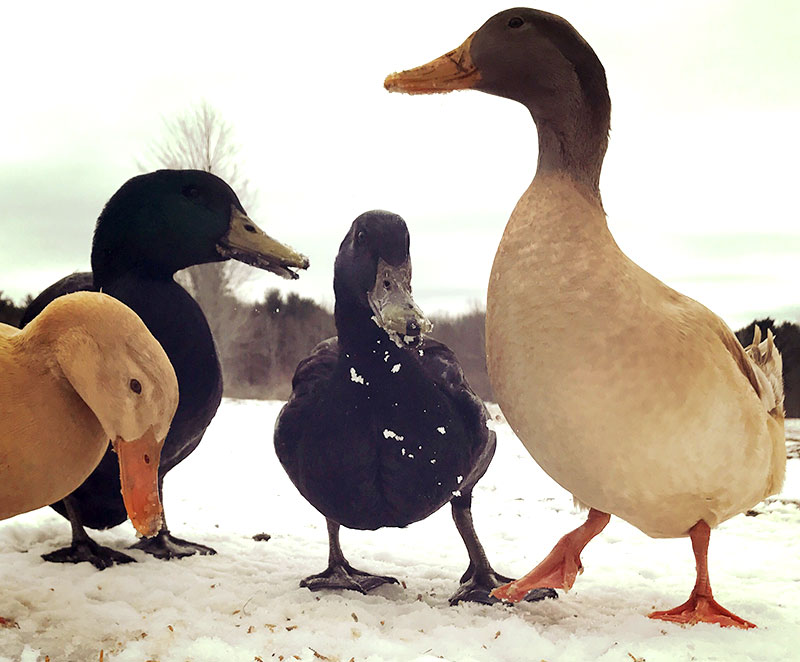
This time of year, many people who are already involved in poultry farming with chickens as well as people who want to start flocks consider adding ducks or geese (or both) to their farm or backyard. If you’re considering adding waterfowl, here are are a few things to help you prepare for their arrival.
Housing
Unlike chickens, most waterfowl do not roost at night. Rather, they prefer to sleep on the ground in a safe place.
Some ducks, especially Muscovies, do roost. But the majority like to bed down in a stall, hut or coop.
Also contrary to chickens, ducks and geese do not use nesting boxes but lay eggs on the ground. They can lay randomly in the yard but often prefer to do so in their coop.
Because of these simple needs, setting up a duck or goose house doesn’t have to be as tricky as creating the perfect chicken coop. The main consideration is enough space—and enough space to expand if you plan to grow your flock. Ducks each need four square feet of floor space for their inside coop, while geese require eight square feet.
Make sure they have plenty of clean, dry bedding at all times. Dirty bedding is cold and spreads disease. So whatever you use for your birds, make sure you change it regularly.
Ducks and geese can be bedded down with pine shavings, straw or peat moss.
Outside Space
Your birds won’t spend too much time inside if they have a nice run to keep them amused.
Ducks and geese both prefer to free range. But often predators or neighbors are a concern, so a run space must be built.
Again, remember to provide enough room for all of your birds—even future birds. Geese need 30 to 40 square feet in an enclosed yard, more if it can be provided, while ducks need at least 15 square feet per bird.
While neither ducks nor geese require a pond, they do need plenty of water to bathe in. A rubber livestock tub or kiddie pool is perfect, but make sure you place it where a mess is OK because they will splash around a lot.
Feed Needs
If you are able to allow your birds to free range they will happily nibble at grass (geese) or eat slugs and other nuisance bugs (ducks).
They’ll need some extra food as well, but free-ranging birds don’t consume as much because of their fresh diet.
Most livestock feed brands carry a waterfowl mix that contains Niacin, a form of Vitamin B. This can be the easiest way to provide your waterfowl with their feed. But adding things such as sunflower seeds, cracked corn or oats gives them a nutrient-dense boost.
Neither ducks nor geese should eat bread, at least not much, and not often. Bread is like junk food for birds—all empty calories and not good for them.
Integrating with Your Chickens
Ducks and geese can be kept with chickens, but a few steps should be taken to ensure they all get along.
Ducks happily roam around with chicken friends, but they do require more water and make more of a mess with their water.
Geese mostly ignore chickens, but during the mating season they can become aggressive. While birds kept in a run or free ranging usually get along, I do not recommend housing geese in an enclosed night space with either ducks or chickens because they can inflict serious injury.
A single goose is a bit different from a flock because as a gosling it can imprint on the chickens and become bonded with them. In this case its purpose can become the care of the chicken or even duck flock, and they will happily all house together.
Waterfowl are entertaining birds with great personalities. Ducks and geese alike will wander around your farmyard, providing you with fresh eggs and entertainment, and also keeping slugs and weeds at bay.
They are a wonderful addition, and it just requires a few steps to get your place prepared for them.




